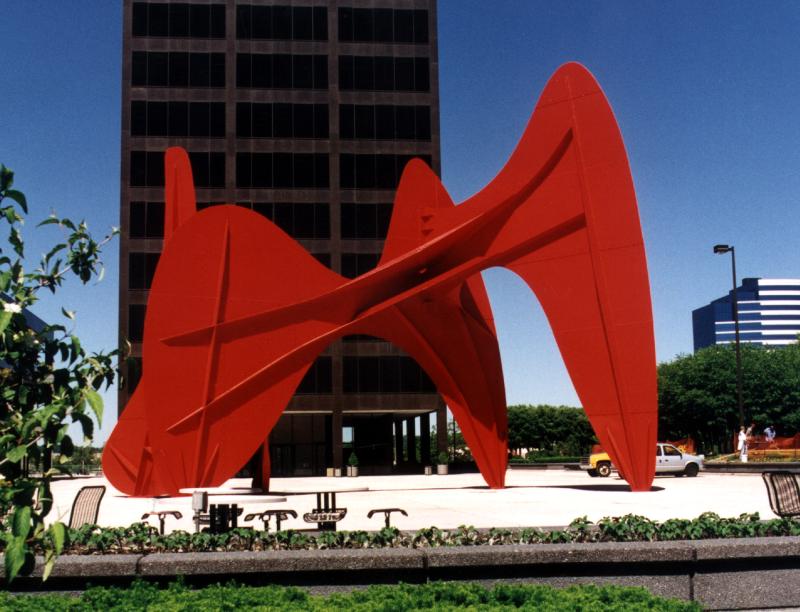1967

Alexander Calder’s La Grande Vitesse, the initial project of the NEA’s Public Art Initiative, helped revitalize Grand Rapids’ ailing downtown. Photo courtesy of the Grand Rapids Public Library
Stamped on everything from the city's letterhead to its garbage trucks, Alexander Calder's La Grande Vitesse is much more than a landmark. It's the ubiquitous symbol of Grand Rapids, Michigan. "Literally and figuratively it's become the heart of the city. It's so fitting that it's bright red," said Nancy Mulnix, who first conceived the project. In 1967, Grand Rapids was building a new city hall downtown in the hopes it would help bring the blighted area back to life. Mulnix asked the fledgling federal arts agency to help the city commission a sculpture for the plaza in front of the new building.
The Arts Endowment awarded a $45,000 grant to Grand Rapids as part of the agency's new public art initiative. Mulnix and her committee raised the additional $83,000 needed to commission, ship, and construct the new work. Alexander Calder, one of America's preeminent artists, was chosen to create the first civic sculpture jointly financed by federal and private funds. The NEA went on to fund almost 700 other works as part of its $15 million public art project. In May 1969, Calder's 42-ton work arrived in Grand Rapids in a series of enormous crates. A huge crane lifted the 27 separate sections so they could be bolted into place. The whole process took five days. "It created a kind of a circus atmosphere," Mulnix remembered. "It was all laid out like a jigsaw puzzle. It was fascinating for people to watch this big object grow before their very eyes. The sparks flew as the welders worked and then the vivid color was painted on. It was like outdoor theater."
Literally translated, La Grande Vitesse means "the great swiftness." The work—standing 54 feet long, 43 feet high, and 30 feet wide—was designed to provide dramatically different views from each corner of the square. Although the sculpture is stationary, it gives the appearance of movement. The Calder had a dramatic impact on Grand Rapids, Mulnix said. "I thought it could function as an icebreaker does out on the Great Lakes in early February. It proved to be true; the Calder energized the community and made anything seem possible." It sparked the city's interest in other arts activities, she added. A new home for the art museum, a civic theater, and a symphony hall were soon built. The Calder sculpture's birthday is celebrated with an annual arts festival, encompassing ten city blocks and attended by half a million people. "It changed the role of the arts and public sculpture in the life of this community because of the sheer magnitude of La Grande Vitesse and the excitement surrounding it, as well as all the work the community did to bring it here," noted city historian Gordon Olson. "It led to a change in attitude so that the assumption now is that every good community project should include a piece of public art."

